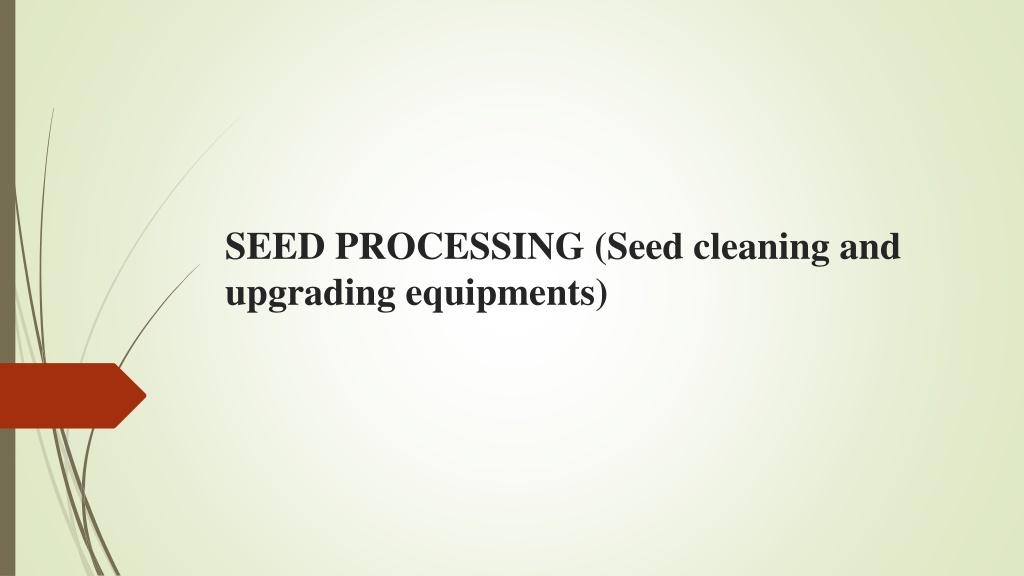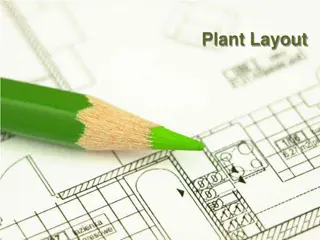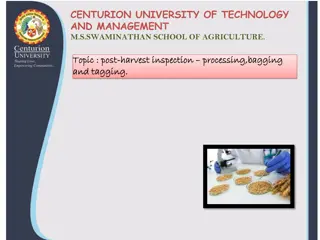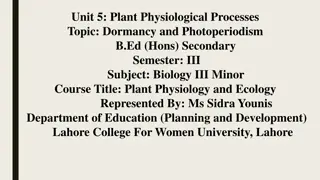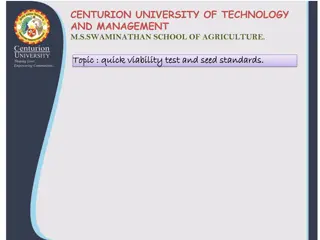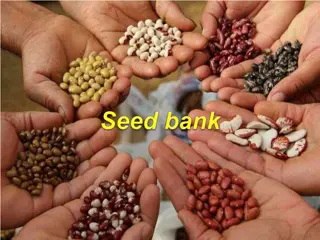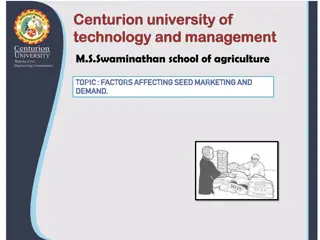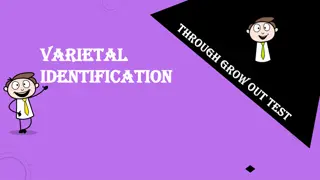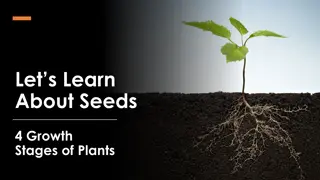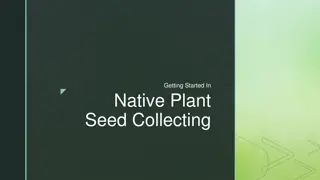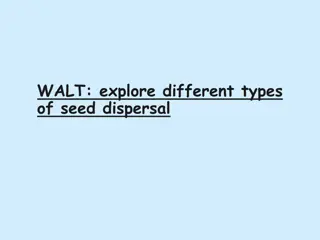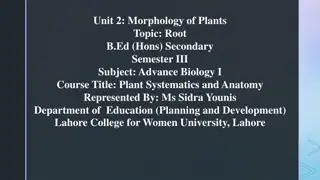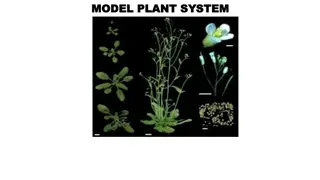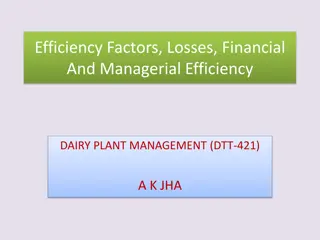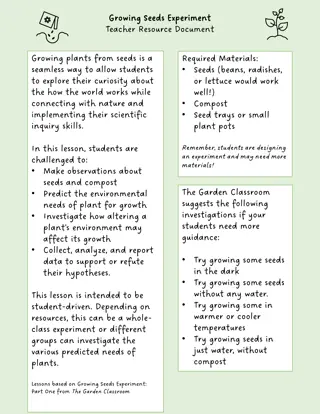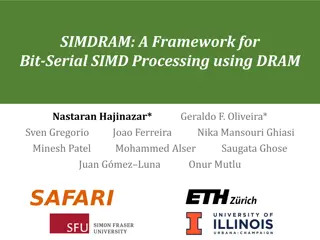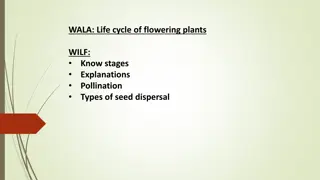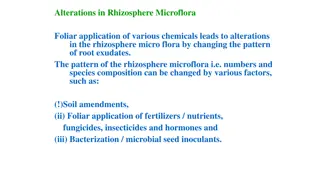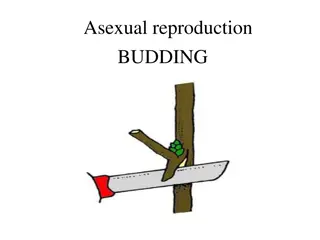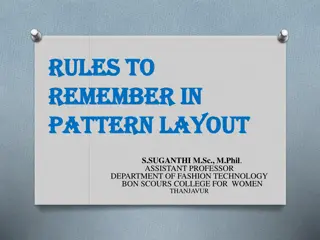Efficient Layout Planning for Seed Processing Plant
Seed processing is crucial for removing contaminants and drying seeds to a safe moisture level. Planning a seed processing plant layout involves considering factors like types of seeds, operation size, equipment selection, location, labor availability, and more. Components of the building layout include receiving-cum-drying platforms, processing areas, and auxiliary buildings for facilities like generators and firefighting equipment.
Download Presentation

Please find below an Image/Link to download the presentation.
The content on the website is provided AS IS for your information and personal use only. It may not be sold, licensed, or shared on other websites without obtaining consent from the author. Download presentation by click this link. If you encounter any issues during the download, it is possible that the publisher has removed the file from their server.
E N D
Presentation Transcript
SEED PROCESSING (Seed cleaning and upgrading equipments)
SEED PROCESSING Seed lots received from the field are often at high moisture content and contain trash and other inert material, weed seeds, deteriorated and damaged seeds, off- size seeds, etc. Seed processing is necessary in order to dry the seeds to safe moisture level; remove or reduce to the extent possible the various undesirable material, weed seeds, other crop seeds, deteriorated or damaged seeds.
Seed Processing Plant Layout Planning Layout plan for construction of a seed processing plant should be carefully planned to ensure that the thorough Seed cleaning Upgrading Seed treatment Other seed processing operations are carried out efficiently, without mixing and damaging seed lots, with a minimum of equipment, personnel, time and at minimum cost
The following factors should be considered in planning and designing a seed processing plant: 1. Kinds of crop seeds to be handled and kinds of contaminating crop and weed seeds usually present in the seed lots 2. Size of operation 3. Whether drying facilities should be required 4. Selection of suitable equipment 5. Location of the plant 6. Source of power for running machinery 7. System of seed delivery to processing plant 8. Availability of labour
Seed Processing Plant Building Layout Seed processing plant building will comprise of following components: 1. Receiving-cum-drying platform : Utilized to receive the raw seed and to sun dry small lots of crop seeds This area can also be utilized for storage of seeds on wooden palettes. The platform will be connected to processing shed through a rolling shutter 2. Processing area The hall should be connected to ventilated flat stores through a covered gallery for easy movement of processed and packaged seed to seed stores The hall should have a big rolling shutter in the processing plant to permit entry of seed processing equipment into the hall for installation Height will be kept to facilitate installation of the seed processing equipment and machinery
3. Auxiliary building: In addition to building discussed above, a provision should be made for generator room Sufficient length of road should be provided to connect various functional buildings with each other and main highway Boundary wall should be provided all around the complex for security reasons Entire complex should have a good drainage system Provision for firefighting equipment such as extinguishers, water buckets, sand buckets etc. should be made to fight minor fire hazards
Type of Layouts There are three main types of processing plant layouts: multistorey, single level and combination. Multistorey: In this system, seed is carried by elevators to the top floor and emptied into large bins. Cleaning machines are then arranged in a vertical series on the lower floors. Seed flows from one machine down into the next by gravity. Single level: In the single storey plant, seed is moved from one machine to the next by elevators placed between the machines. A great advantage of the single level system is that one man can supervise the processing line without running up and downstairs. He can thus maintain closer supervision of all operations. Combined designs: A compromise between the single and multistorey system could also be adapted.
SEED CLEANING I.Air screen cleaner This is the most important machine of every cleaning plant. It uses screens and aspiration (air blow) for two separations A coarse upper screen removes larger material, a lower fine screen stops the seeds and lets through fine matter and then the seed fraction passes through a transverse or nearly vertical air stream which can separate light impurities such as empty or partly filled seeds, husks and glumes from the seed In most cases a number of sieves with different sized perforations are used and the cleaning is a process of gradually shifting out smaller particles Factors which determine the quality and quantity of seed cleaned include (i) size of the perforations (ii) the precision of the perforation (iii) the angle at which the sieves operate (iv) the amplitude and speed of movement of the sieves (v) correct cleaning and maintenance of the equipment
Principle of Operation of airscreen machine 1. The air blast removes lightweight seed and chaffy seed. 2. Scalping screen removes material larger than the crop seed. 3. Grading screen drop out material smaller than crop seed. 4. Eccentrics do the shaking motions of the screens. 5.The two shoes in 4 screen cleaner move in opposite direction to balance each other also to reduce machine vibrations to minimum. First screen does scalping Second screen does grading Third screen does close scalping Fourth screen does close grading
II. Cleaner cum grader The dried seeds should be cleaned and graded with help of a cleaner cum grader. For large scale cleaning and grading the commonly available machine is the Crippen Model Seed Cleaner cum Grader . It consists of the following parts A hopper in the top for seed filling A flutted roller below the hopper to regulate the seed flow to the screen Screen (or) sieves: Perforated metal sheet with specific size of perforation in which there are two types Rectangular perforations for paddy Round perforations for seed other than paddy Screen shaking unit : for oscillating the sieves to move the seeds on the screens Screen brushes to remove the blocked seeds Air blower with adjustments for air outlet Collecting outlet Air duct for directing the blown up light particles to outside Collecting bins
Working principle The seeds are fed into the hopper and they are guided to fall on the first sieve. The first sieve is a scalping screen which scalps all the foreign materials larger and heavier than seed and the entire quantity of seed passes through the first sieve The second sieve is a cleaning sieve which removes all the unwanted particles larger in size than the seed The third sieve is actually the grading sieve which size grade the seed lot and bring into a uniform size and which also screen the undersized, shriveled and immature seed, dust and dirt The seeds are then rolled and passed through air column, where they are relived of the light chaffy and other materials by the blowing air
Seed upgrading equipments Type of upgrading Operations & types of Machines Principle of operation of the equipment Uses of the machine 1. a. Sizing and Grading Width and Thickness sizing and grading These machines make extremely sensitive separations on the basis of differences in width and thickness. The seeds are sized for width by using round hole screen openings and for thickness by using slotted screen openings. The separators employ gravity, centrifugal force, product pressure or a combination of these forces to make the separation. 1. 2. The removal of chips and splits from sorghum seeds 3. Removal of cheat from wheat 4. Removal of cockleburs from cotton seed, wild onion from fescue, and wild oats from Removal of splits from soybeans, peanuts etc. 1. Horizontal flat screen separator eg. Clipper corn sizer, superior cork-it-corn grader 2. Vertical ribbed screen separator eg. Dockins seed grader 3. Cylindrical screen separator a. Length sizing and grading Seeds are separated on pure length basis 1. 2. 3. 4. Removal of weed seeds Cross broken crop seeds To upgrade general appearance Size grade for precision planting 1. Disc Separator In disc separator the disc lifts uniformly shaped and sized and under sized particles out of a mass of seed. The separation is not affected by seed coat texture, weight or moisture content The cylinder separator operates on a centrifugal force principle in which the speed of the cylinder holds seed in the indents, lifting them out of the mass until the indents are inverted to the point where gravity causes the particles to fall. Shape and size of the indents and seed, seed coat texture moisture content and weight of seed all combine to affect seed separation 1. Cylinder separator
2. Gravity or Weight separations 1. Gravity separator The gravity separator employs a flotation principle. In this separation seeds are vertically stratified in layers on the deck according to density. Seeds of same size are stratified and separated by differences in their specific gravity. The oscillating movement of the table walks the heavy seeds in contact with the deck uphill while the air floats the light seeds downhill. The seeds travelling to the edge of the table range from light at the lower end to heavy at the upper end. The discharge can be divided into any number of density fractions 1. Removal of badly deteriorated diseased seed and insect damaged seed Removal of empty or sterile seed Removal of soil particles and gravel and send mixed with certain kind of seeds Removal of contaminating crop or weed seed 2. 3. 4. 2. Stoners It is a modified gravity separator designated to make two parts of separations by differences in gravity Removal of heavy inert material from a larger volume of seed
3. Air separations 1. Pneumatic Separator It uses the movement of air to divide seeds according to their terminal velocities. Terminal velocity refers to the velocity of air required to suspend particles in a rising air current. Many factors such as density shape and surface and texture effect resistance of a particle to airflow. When the seed is introduced into an air stream all the particles with lightweight are lifted by the velocity of the air, while the seeds with heavy weight fall below. In pneumatic air separator the air is blown through the fan which lifts the light material and the seeds which are light in weight 1.General cleaning 2. Close grading 3. Specific separation 2. Aspirator In aspirator the fan is at discharge end and induces a vacuum, which allows the atmospheric pressure to force air through the separator 3. Fractional Aspirator In fractional aspirator when a seed mixture is introduced into the lower end of an expanding air column, heavy seeds fall against the airflow and light seeds are lifted. Air velocity through the expanding columns lessens and gradually drops out seeds with lower terminal velocities. Each outlet along the column receives a lighter fraction of seeds the mixture is thereby separated into several grades
4. Surface Texture Separation 1. Roll Mill The velvet roll mill classifies seeds according to a difference in texture of seed coat. When a seed mixture is fed on to the upper end of the rolls, the smooth seeds travel down hill between them and are discharged at the lower end. Rough- coated seeds caught in the velvet take a bouncing path between shield and rolls and are thrown over sides. The discharge from the sides of the rolls is caught is several directions. The roughest seeds are ejected first Separation of smooth clover seeds eg. From rough seed coats, seeds with irregular shape, wrinkle or shrivelled seeds, broken, clipped or damaged seeds rough or irregular shaped inert material Magnetic superiors take advantage of the surface texture and stickiness of seed to make a separation. A seed mixture and proportionate amount of water and finely ground iron powder are mixed in a screw conveyor or other mixing device. In the presence of moisture, the iron powder will adhere to rough cracked and sticky seeds. When the mixture is fed to the top of a horizontal revolving magnetic drum smooth or sticky seeds that are relatively free of iron powder all from the drum, while the rough textured seeds with iron powder stick to the drum until they are removed by a rotary brush 2. Magnetic separator Separation of smooth or round seeds from rough, flat or elongated seed The inclined draper separator senses differences in shape and surface texture to separate seed on an inclined plane. A mixture to be separated is metered on to the center of an inclined draper belt travelling in an uphill direction. Round or smooth seeds, which roll or slide down the draper, faster than the draper travelling upwards. Flat or rough-coated seeds are carried to the top of the inclined plane and dropped into a separate hopper 3. Inclined Draper
5. Electronic separation Electric color sorters The electric color sorter separates the seeds on the basis of difference in color brightness. One type of machine picks up the seeds on a series of suction fingers and carries them to a phototube where they are judged for colour brightness and ejected into separate containers one at a time Separation of off coloured seeds 6. Other Separators 1. Spiral separator The spiral separator makes a division of seed according to shape or the degree of its ability to roll. The separator resembles a stationary open screw conveyor standing on end. The mixture fed onto the spiral at the top, slides or rolls down the inclined surface. The fast rolling seeds gain speed and are thrown by centrifugal force into an outer housing, which directs them to a chute below. The slow rolling seeds remain on the inner inclined surface and enter a second chute at the bottom Separation of rape and soybean seeds from wheat, oat and rye grass. Similarly, separation of flat and wrinkled seed of soybean from smooth seed 1. Polishers To improve the lusture of the seeds. Eg. Beans peas, popcorn etc Polishers use a polishing agent such as sawdust or bran to remove discoloration. In some of the polishers mild mechanical rubbing action is provided 1. Picker belts Removal of undesirable ears of corn, pods from shelled peanuts and other specific contaminants Separations that cannot be made by machines may be made by hand on hand picker belts. The maize cobs are fed on one end of the moving belt. Operators examine the cobs and that which are of offtypes are removed by hand
